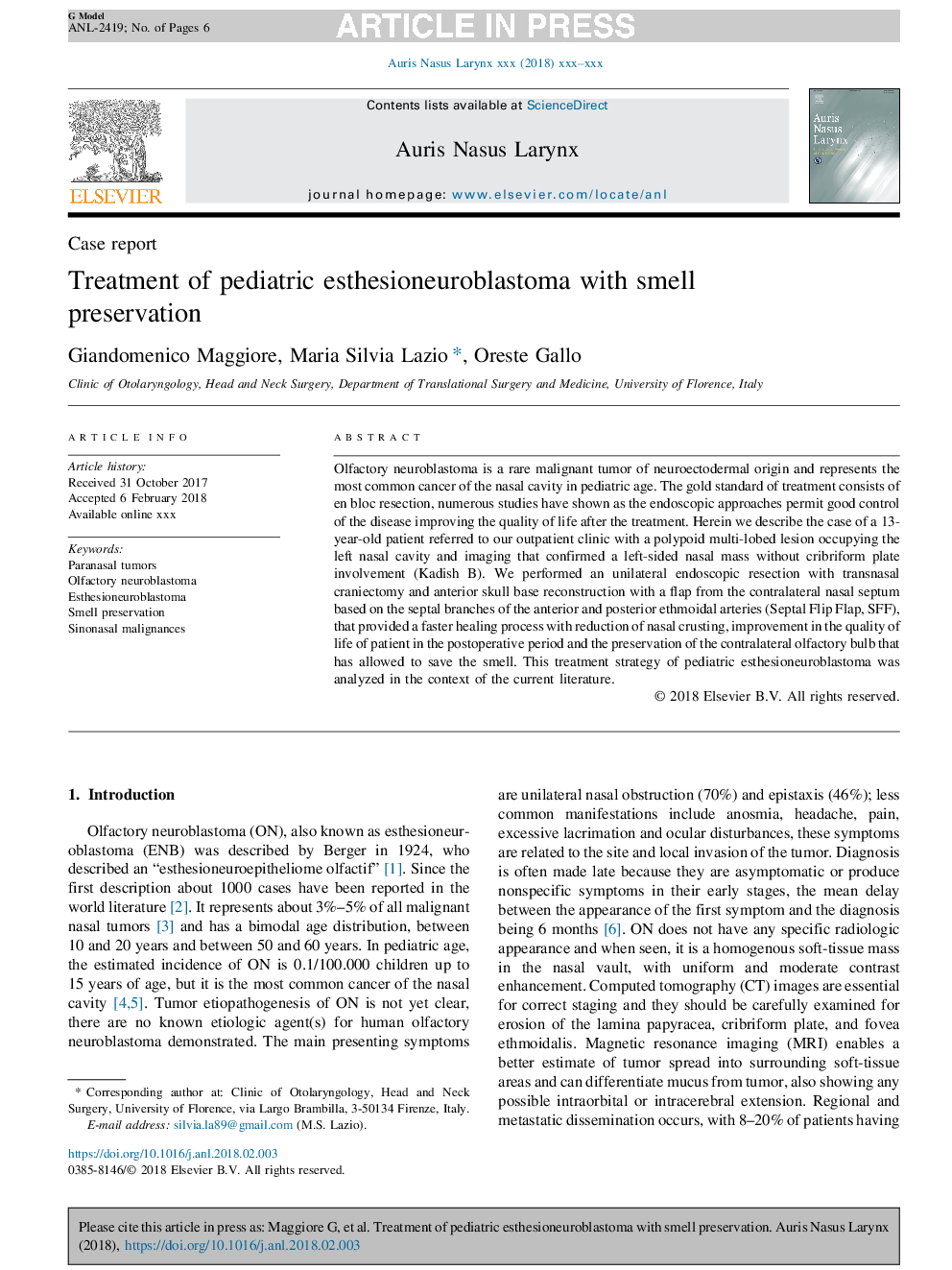| Article ID | Journal | Published Year | Pages | File Type |
|---|---|---|---|---|
| 8754698 | Auris Nasus Larynx | 2018 | 6 Pages |
Abstract
Olfactory neuroblastoma is a rare malignant tumor of neuroectodermal origin and represents the most common cancer of the nasal cavity in pediatric age. The gold standard of treatment consists of en bloc resection, numerous studies have shown as the endoscopic approaches permit good control of the disease improving the quality of life after the treatment. Herein we describe the case of a 13-year-old patient referred to our outpatient clinic with a polypoid multi-lobed lesion occupying the left nasal cavity and imaging that confirmed a left-sided nasal mass without cribriform plate involvement (Kadish B). We performed an unilateral endoscopic resection with transnasal craniectomy and anterior skull base reconstruction with a flap from the contralateral nasal septum based on the septal branches of the anterior and posterior ethmoidal arteries (Septal Flip Flap, SFF), that provided a faster healing process with reduction of nasal crusting, improvement in the quality of life of patient in the postoperative period and the preservation of the contralateral olfactory bulb that has allowed to save the smell. This treatment strategy of pediatric esthesioneuroblastoma was analyzed in the context of the current literature.
Related Topics
Health Sciences
Medicine and Dentistry
Medicine and Dentistry (General)
Authors
Giandomenico Maggiore, Maria Silvia Lazio, Oreste Gallo,
